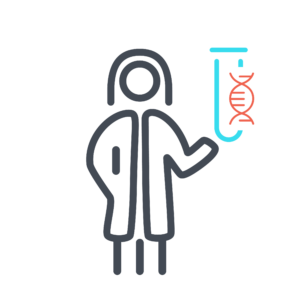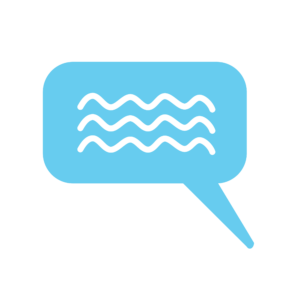VPS13B-Related Syndrome

Table of contents
- What is VPS13B-related syndrome?
- Key Role
- Symptoms
- What causes VPS13B-related syndrome?
- Why does my child have a change in the VPS13B gene?
- What are the chances that other family members of future children will have VPS13B-related syndrome?
- How many people have VPS13B-related syndrome?
- Do people who have VPS13B-related syndrome look different?
- How is VPS13B-related syndrome treated?
- Behavior and development concerns linked to VPS13B-related syndrome
- Medical and physical concerns linked to VPS13B-related syndrome
- Where can I find support and resources?
- Sources and References
VPS13B-related syndrome is also called Cohen syndrome. For this webpage, we will be using the name VPS13B-related syndrome to encompass the wide range of variants observed in the people identified.
What is VPS13B-related syndrome?
VPS13B-related syndrome happens when there are changes in the VPS13B gene. These changes can keep the gene from working as it should.

Key Role
The VPS13B protein plays an important role in the growth and development of brain cells and in fat storage and distribution in the body.
Symptoms
Because the VPS13B gene is important for brain activity, many people who have VPS13B-related syndrome have:
- Developmental delay
- Intellectual disability
- Brain changes seen on magnetic resonance imaging (MRI)
- Heart structure defects
- Sideways curve of the spine, also called scoliosis
- Very flexible joints
- Low muscle tone
- Delayed motor skills
- Delayed puberty
- Issues with producing growth hormone
- Issues with the body making certain blood cell types
- Obesity
- Very social behavior
What causes VPS13B-related syndrome?
VPS13B-related syndrome is a genetic condition, which means that it is caused by variants in genes. Our genes contain the instructions, or code, that tell our cells how to grow, develop, and work. Every child gets two copies of the VPS13B gene: one copy from their mother’s egg, and one copy from their father’s sperm.
Some people have variants to their genes that prevent them from working properly. A variant in one copy of the VPS13B gene has little or no effect on their health — because one working copy is enough. People who have one working copy of the gene and one non-working copy of the gene are called ‘carriers’. Some people have genes where both copies do not work as they should. In these cases, the person has inherited non-working copies of the gene from both parents. This can lead to physical issues, developmental issues, or both.
Autosomal recessive conditions
VPS13B-related syndrome can also be an autosomal recessive genetic condition. To be affected with symptoms of an autosomal recessive genetic condition, a person has two damaging variants on both copies of their VPS13B. For someone with an autosomal recessive genetic syndrome, every time they have a child they will pass on one non-working copy of VPS13B.
Autosomal Recessive Genetic Syndrome
Why does my child have a change in the VPS13B gene?
No parent causes their child’s VPS13B-related syndrome. We know this because no parent has any control over the gene changes that they do or do not pass on to their children. Please keep in mind that nothing a parent does before or during the pregnancy causes this to happen. The gene change takes place on its own and cannot be predicted or stopped.
What are the chances that other family members of future children will have VPS13B-related syndrome?
Each family is different. A geneticist or genetic counselor can give you advice on the chance that this will happen again in your family.
- The risk of the same biological parents to a child with an autosomal recessive genetic condition, having another child who has VPS13B-related syndrome is almost always 25 percent.
- The chance of two carrier parents having a child who is also a carrier is 50 percent. Carriers are not expected to have symptoms.
- The chance of them having a child who is not a carrier at all is 25 percent.
For a person who has VPS13B-related syndrome, the risk of having a child who has the same syndrome depends on their partner.
- If their partner is a carrier, they have a 50 percent chance of having a child who has the syndrome and a 50 percent chance of having a child who is a carrier.
- If their partner is not a carrier, they have nearly a 0 percent chance of having a child who has the syndrome and a 100 percent chance of having a child who is a carrier.

How many people have VPS13B-related syndrome?
As of 2025, more than 200 people with VPS13B-related syndrome have been described in medical research.

Do people who have VPS13B-related syndrome look different?
People with VPS13B-related syndrome may look different. Appearance can vary and can include some but not all of these features:
- Smaller than average head size
- Shorter than average height
- Eye and vision issues
- Small lower jaw
- High nose bridge
- Narrow hands and feet

How is VPS13B-related syndrome treated?
Scientists and doctors have only just begun to study VPS13B-related syndrome. At this point, there are no medicines designed to treat the syndrome. A genetic diagnosis can help people decide on the best way to track the condition and manage therapies. Doctors can refer people to specialists for:
- Physical exams and brain studies
- Genetics consults
- Development and behavior studies
- Other issues, as needed
A developmental pediatrician, neurologist, or psychologist can follow progress over time and can help:
- Suggest the right therapies. This can include physical, occupational, speech, or behavioral therapy.
- Guide individualized education plans (IEPs).
Specialists advise that therapies for VPS13B-related syndrome should begin as early as possible, ideally before a child begins school.
If seizures happen, consult a neurologist. There are many types of seizures, and not all types are easy to spot. To learn more, you can refer to resources such as the Epilepsy Foundation’s website: www.epilepsy.com/learn/types-seizures.

This section includes a summary of information from published articles. It highlights how many people have different symptoms. To learn more about the article, see the Sources and References section of this guide.
Behavior and development concerns linked to VPS13B-related syndrome
Speech and learning
All people with VPS13B-related syndrome had developmental delays in the first year of life. Most had intellectual disability in the moderate to profound range, and they were able to speak sentences on average by the age of 5 years old.
Behavior
People with VPS13B-related syndrome were usually described as having a cheerful and friendly disposition.
Brain
Some people with VPS13B-related syndrome had neurological medical issues, including seizures, low muscle tone (hypotonia), hypermobile joints, a smaller than average head size (microcephaly), and brain changes seen on magnetic resonance imaging (MRI).

Medical and physical concerns linked to VPS13B-related syndrome
Growth
Many people with VPS13B-related syndrome had failure to thrive and short height early in development. Teens tended to have delayed puberty and they gained weight rapidly, becoming overweight.
Blood and immunological findings
People with VPS13B-related syndrome had low levels of white blood cells (neutropenia). White blood cells help people fight infections, and research suggests that people with VPS13B-related syndrome have more frequent infections.
Vision
Usually, people over the age of 4 years old, had nearsightedness (myopia) and/or retinal dystrophy. Other vision findings included but were not limited to crossed eyes (strabismus) or cataracts.

Where can I find support and resources?
Cohen Syndrome Research Foundation
The Cohen Syndrome Research Foundation is a resource for families looking for information, a repository for medical professionals seeking standards of care and research studies, and a driving force behind researchers seeking to improve outcomes of those with Cohen Syndrome.
Cohen Syndrome Association
The Cohen Syndrome Association aims to raise awareness for earlier diagnosis of Cohen Syndrome.
Simons Searchlight
Simons Searchlight is an online international research program, building an ever growing natural history database, biorepository, and resource network of over 175 rare genetic neurodevelopmental disorders. By joining their community and sharing your experiences, you contribute to a growing database used by scientists worldwide to advance the understanding of your genetic condition. Through online surveys and optional blood sample collection, they gather valuable information to improve lives and drive scientific progress. Families like yours are the key to making meaningful progress. To register for Simons Searchlight, go to the Simons Searchlight website at www.simonssearchlight.org and click “Join Us.”
- Learn more about Simons Searchlight: www.simonssearchlight.org/frequently-asked-questions
- Simons Searchlight webpage with more information on VPS13B: www.simonssearchlight.org/research/what-we-study/vps13b
- Simons Searchlight VPS13B Facebook community: https://www.facebook.com/groups/vps13b

Sources and References
- Momtazmanesh, S., Rayzan, E., Shahkarami, S., Rohlfs, M., Klein, C., & Rezaei, N. (2020). A novel VPS13B mutation in Cohen syndrome: A case report and review of literature. BMC Medical Genetics, 21(1), 140. doi:10.1186/s12881-020-01075-1
- Wang, H., Falk, M. J., Wensel, C., & Traboulsi, E. I. Cohen syndrome. 2016 Jul 21. In: Adam MP, Feldman J, Mirzaa GM, et al., editors. GeneReviews® [Internet]. Seattle (WA): University of Washington, Seattle; 1993-2025. Available from: https://www.ncbi.nlm.nih.gov/books/NBK1482/
